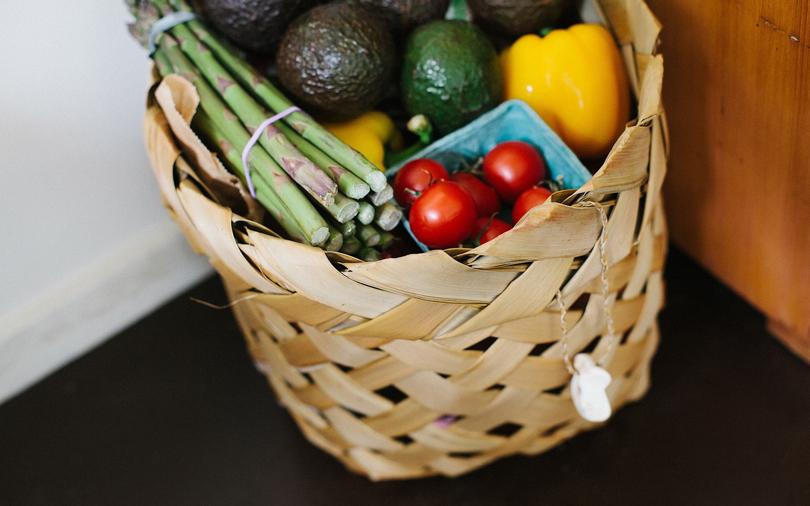When homegrown e-commerce major Flipkart announced a soft launch of grocery delivery under 'Supermart' earlier this week, it brought a sense of déjà vu. For, the e-tailer had launched the service on its Nearby app in 2015, only to pull the plug on it five months later.
But the circumstances are markedly different. While there wasn't a sizeable cash cushion to dabble in new areas the first time around, the second pilot comes on the back of a massive $4 billion war chest that Flipkart has amassed, courtesy of funding rounds from Japan's SoftBank in August, and Microsoft, Tencent, and eBay in April.
Besides, with arch-rival Amazon stepping up its focus on e-grocery, one of the few hitherto-unclaimed segments in India's e-commerce, Flipkart is faced with an urgency now. Chinese e-tailing giant Alibaba and homegrown e-wallet company Paytm are also likely to invest about $200 million in market leader BigBasket, which will give them a formidable head start.
Can Flipkart, buoyed by its financial firepower and strong tech capabilities, steal a march over others? Experts feel it won't be a walk in the park—it will take the company up to five years to emerge as a force in the segment, even if it were to build the vertical inorganically.
Let's understand why.
The lure of online grocery
Online grocery isn't touted as the next warfront for e-commerce companies for nothing. Though it is still young and maturing, getting a stronghold in the space means frequent purchases, leading to higher customer acquisition.
And the potential is huge. A recent report by research firm RedSeer says India's online grocery market is on track to hit $1 billion in 2017, driven by strong growth in transactions and average order value.
“2017 is on track to be a robust year for e-grocery market with 60% year-on-year growth likely. Sales have been driven largely by volume growth, which points to growing acceptance and penetration of online grocery,†the report says.
According to industry estimates, grocery accounts for as much as 60% of consumers' total spend. For e-tailers, the wafer-thin margins may not contribute to income significantly, but they do boost the gross merchandise volume a great deal.
"The objective is clear… to get access to a wider database of consumers. Frankly, there is little scope for differentiation in the segment and it is more of a ring-fence tactic to retain unique users," says Anup Jain, managing partner at consumer and retail consultancy Redback Advisory Services.
The right model
The ghosts of past mistakes will ensure that unlike the last time, Flipkart will install an inventory-led model, just like BigBasket's. The shutdown of the hyper-funded PepperTap, and an eventual shift to the inventory-led model by Grofers, only validate this.
“Hyperlocal on-demand and asset-light model hasn’t really worked. Flipkart is likely to exercise more restraint in terms of merchandise (product base) and geography this time,†says Arvind Singhal, chairman at retail consultancy Technopak.
Jain echoes Singhal's thoughts. "Inventory-led model is the way to crack it. Over time, you get to know your customer’s ordering pattern... use the pilot to develop the tech around it, which ultimately translates into better inventory forecast and management,†he says.
Not everyone agrees, though. Satish Meena, senior forecast analyst at Forrester Research, feels Flipkart will likely try out a mix of models and not restrict itself to an inventory-led model. “They are likely to try out every option… they will try on-demand, inventory, private labels, working with direct manufacturers etc.,†he says, adding that the final product will not come without multiple iterations.
Meena may not be off the mark. Once the business matures and reaches a critical mass, Flipkart may also have to deploy a private label strategy, something all online grocers have done. Rival Amazon has already obtained regulatory approvals for its online food retail business and committed over $500 million to it.
Growth path
While an inorganic growth strategy will help scale the business at a fast clip, experts feel there aren't many options for Flipkart to shop from.
“Given the option of finding a company with the right price versus building on its own, Flipkart is most likely to resort to the latter. Besides, it has sufficient expertise in technology and logistics,†Singhal explains.
However, given the country's biggest e-tailer is flush with cash, acquisitions are not unlikely. In September, VCCircle had reported that Flipkart had bumped up the reserves earmarked for financing investments, making acquisitions and extending inter-corporate loans to Rs 8,000 crore ($1.25 billion).
Meena feels Flipkart won't rule out inorganic growth, and it is likely to acquire companies provided the right opportunity came along.
Logistics, the linchpin
In segments like online grocery, if often boils down to hyperlocal delivery capabilities. And while Flipkart may have built a significant business out of its logistics vertical eKart, delivering groceries is a different ball game altogether.
Ramping up the grocery play, thanks to the bulky and perishable nature of products, entails significant investments in warehousing, cold chain, sourcing and overall supply chain. Hence, a partnership with other entities cannot be ruled out.
“The DNA of the grocery business is very different. It is all about freshness, appearance, targeted delivery and timeliness. This requires a focussed team and Flipkart will definitely have to do some big-time hiring to ramp up the vertical,†feels Jain. Action already seems to be underway on this front as a recent Mint report stated that CEO Kalyan Krishnamurthy has brought back two former executives, Manish Kumar and Nitin Rajput, to help launch the new category.
“As and when functions like local sourcing, cold chain, distribution and warehouses expand, they will entail significant investment,†feels Singhal. There shouldn't be challenges on the investment front, though, with eKart recently earmarking $460 million for investments and acquisitions.
For all the enthusiasm around Flipkart's revitalised avatar, one can't discount Amazon's year-long head start in the segment and BigBasket's near-monopoly. Flipkart will really need to pull a rabbit out of the hat to make a dent in their market share.
"Flipkart will eye the 40% business that comes from the top six metros, acquire the cream of customers, and maybe go below further. But that’s a real long shot,†says Jain.







